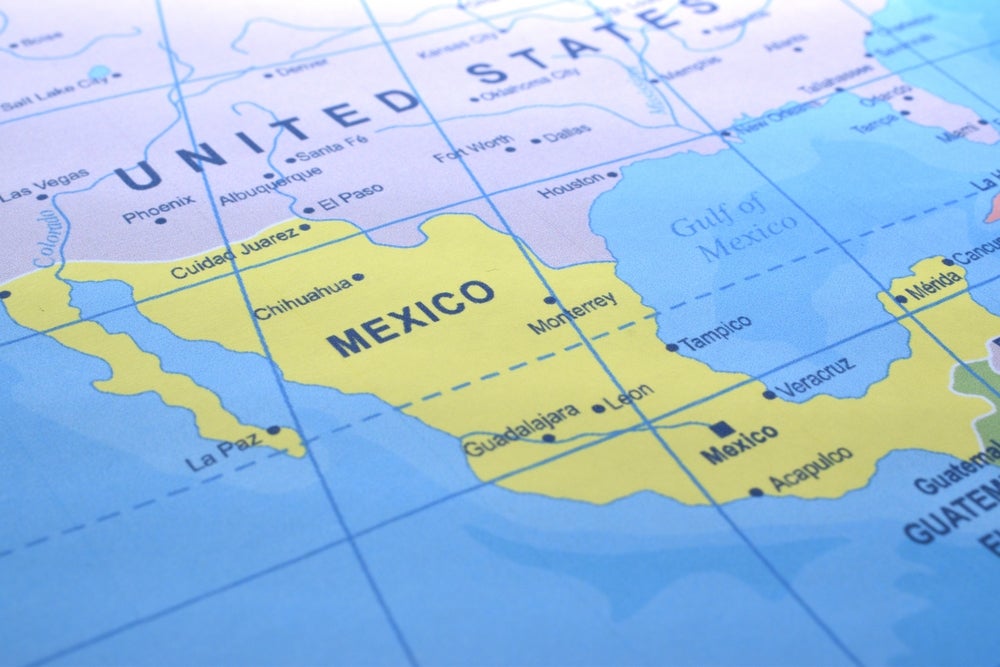Despite having one of the smallest
populations in the eurozone, Finland is miles ahead of the rest of
Europe when it comes to card awareness and usage levels, and
technological innovation is also making an impact. But the lack of
competition in the market could hamper credit growth, as Victoria
Conroy reports.
It has been said that countries with cold
climates are more favourable to electronic payments over cash, as
individuals would prefer not to have to fumble with cash, or trek
to the nearest ATM in harsh conditions. If that is the case, then
Finland stands out as being the definitive example of such a
market. Even the governor of Finland’s central bank, Erkki
Liikanen, has said as much, stating that the country’s low usage of
cash (32 percent as of 2008) is similar to the levels found in
equally chilly Norway and Sweden.
Even though it has a population of only
5.24 million, within the eurozone Finland has the highest usage of
card payments in terms of transactions per inhabitant, with the
average usage per capita far outstripping the likes of the UK and
the Netherlands.
Although cash still accounts for a high
proportion of retail purchases (just over 50 percent of all
purchases at the point of sale), cards have made impressive inroads
thanks to Finnish consumers having a high level of awareness and
education around electronic payments.
Younger consumers in particular are
extremely comfortable with various types of electronic payment
methods, and typically use more than one payment method when paying
at the POS, although debit cards are the predominant method.
The rapid reduction of cheque usage in the
Finnish market during the 1990s, following a concerted effort by
payment players and government bodies, undoubtedly helped to
accelerate debit usage – in 1984 cheques accounted for around 80
percent of retail payments, but by 2002, debit cards accounted for
two-thirds of all card payment value.
How well do you really know your competitors?
Access the most comprehensive Company Profiles on the market, powered by GlobalData. Save hours of research. Gain competitive edge.

Thank you!
Your download email will arrive shortly
Not ready to buy yet? Download a free sample
We are confident about the unique quality of our Company Profiles. However, we want you to make the most beneficial decision for your business, so we offer a free sample that you can download by submitting the below form
By GlobalDataA unique feature of the Finnish market is
that almost all cash in circulation comes from the ATM channel, due
to the relative lack of bank branch networks where customers can
withdraw cash over the counter, and also due to Finnish banks
running a joint interoperable ATM network with extensive coverage
across the country.
However, the number and value of cash
withdrawals is decreasing as more consumers use cards at the POS,
and also, the number of ATMs in use is declining, due to bank
consolidation of ATM networks and the growth of installed POS
terminals.
Card usage trends
 Dominated by debit usage, domestic bank-owned ATM
Dominated by debit usage, domestic bank-owned ATM
cards are in the process of being phased out in accordance with
SEPA principles in favour of internationally-branded cards
featuring EMV chip functionality, which has also given rise to
multi-function or combination payment cards.
These cards are primarily used for debit
payments, with the option to use the credit payment application
built-in, mostly used when Finnish cardholders travel abroad.
However, pure EMV debit cards are the most common form of debit
card in the market.
Given that debit has such a stranglehold
on the payment market it is not surprising that credit cards have
been slow to take off. There has been, however, a significant
amount of activity in the past two years as Finnish banks have
become part of larger pan-Nordic banking groups which have
leveraged their experience in other markets to update and enhance
credit card offerings in Finland.
Finnish consumers are mostly transactors,
not revolvers, when it comes to credit card usage. According to a
study published by the Bank of Finland in mid-2008, 37 percent of
young Finnish consumers had an outstanding credit balance, but only
5 percent of that figure originated from credit cards, with the
rest of the outstanding credit coming from personal loans or
mortgages.
Recently, Visa Europe highlighted Finland
as being one of the few markets in Europe where credit card usage
is still enjoying some level of growth. According to statistics
from Visa Europe, the total number of Visa cards in the country
grew by 10 percent in 2008, with double-digit growth seen in the
number of both debit and credit cards.
Visa cardholder expenditure at the POS
rose by almost 5 percent, with the number of POS transactions
growing by 6 percent in 2008.
Consolidation means less
competition
For those consumers that have
internationally-branded Visa or MasterCard credit cards, the main
motivation appears to be for the convenience of being able to use
it abroad.
Even though Finnish issuers charge APRs of
between 10 and 12 percent, which is low by western European
standards, few Finnish credit cardholders do not pay their credit
card balance in full every month, as personal loans and cash loans
are widely available from Finnish banks, reducing the need for
revolving borrowing facilities.
Another typical feature of the credit card
market is that there are relatively few reward schemes currently
available, which would give Finnish consumers an incentive to use
credit cards more often. Of the few that do exist, they have been
co-branded with Finnair, the national air carrier, although some
issuers have begun the process of teaming up with larger retailers
to implement loyalty schemes that give discounts on
merchandise.
The concentration of Finland’s banking
industry in the hands of a few pan-Nordic banking groups means that
there is little variation in terms of credit card features or
pricing, although banking services are structured a little
differently compared to other European countries.
For instance, ATM or other payment cards
are often automatically provided with bank accounts as part of a
bank service package, which can come with different payment
methods, and the pricing of these packages varies.
Pricing is also tied to the age of the
consumer – in Finland, it is common for basic banking packages to
be provided free of charge until the age of 27, with credit cards
typically not levying an annual fee until after cardholders turn
27. Even then, Finnish consumers are afforded a degree of
flexibility over fees, with some banks letting them choose to pay
either a monthly fee or an annual fee.
At the moment, there appears to be little
incentive or opportunity for foreign credit card issuers to enter
the market, given the concentration of the banking sector, the
entrenchment of debit cards and the miniscule number of people who
revolve their credit card balances, so it is likely that Finnish
credit card market growth will be focused on the international
traveller segment or for usage in e-commerce for the time
being.
Multifunction cards becoming
popular
With little reason to push innovation in
the credit space, issuers have been turning their attention to
advancement in other areas, aiming to capitalise on consumer
familiarity with debit.
A striking feature of the Finnish card
market is the appearance over the past year of multifunction or
combination payment cards, incorporating both debit and credit
functionalities.
Banks, mindful of SEPA requirements for
EMV-enabled cards which can be used across Europe, have begun
replacing their proprietary ATM cards with internationally-branded
EMV-enabled cards. Where Finland differs from the rest of Europe is
that banks have tapped the functionality of EMV to offer dual debit
and credit uses on one card.
Such cards allow customers making
transactions in Finland to opt to pay by debit or credit at the POS
when making purchases, with cards having both a credit card number
(on the front of the card) and a debit card number (on the back of
the card). The cards can also be used abroad, but in locations
where merchants do not have EMV-enabled terminals, purchases are
made using the credit application.
Issuers are effectively hoping to
capitalise on consumer familiarity with debit by introducing credit
to them on their existing debit cards, and expanding the number of
locations where their cards can be accepted, while at the same time
extolling the ease and convenience of using such cards on the
internet.
In this regard, Finland could act as a
template for other European countries and lead by example, much as
it did when it significantly reduced cheque usage in the 1990s. It
is expected that by 2011, EMV-enabled internationally-branded cards
will have completely replaced traditional magnetic stripe
cards.
However, the introduction of EMV and
multifunction cards has not been without controversy. The Finnish
Competition Authority has launched investigations into interchange
fees on EMV cards – according to Finnish merchants, EMV and
multifunction cards are more expensive to accept than old magnetic
stripe cards.
Finnish processor and acquirer Luottokunta
is at the centre of the investigations over how it divides
interchange fees between itself and issuing banks, and the
competition authorities are examining whether such fees run counter
to Finnish trade law.
According to the Federation of Finnish
Commerce, merchants have to pay the bank between zero and €0.05
($0.06) for each transaction paid for using a traditional bank
card, whereas the new cards charge 0.31 percent of the purchase
value.
The Federation adds that if all
traditional bank cards had been eliminated in 2008, the use of new
cards would have resulted in extra costs of €63 million to
retailers (and bringing the same amount of income to Luottokunta
and the banks), but as expected that figure has been hotly disputed
by payment players themselves.
Payment networks
 There is a distinct lack of
There is a distinct lack of
competition in the Finnish acquiring and processing market thanks
to the existence of Luottokunta, a full-service card payment
service company jointly owned by Finnish banks and merchants, and
which is responsible for acquiring international Visa and
MasterCard transactions. At present it manages more than 60
different card schemes. In 2008, those schemes generated total
sales of €16 billion and commission income of €154 billion.
Visa is the dominant payment network in
Finland, with around 4 million Visa-branded classic, gold and
Electron cards in issue by the end of 2008. In 2002, Finland acted
as the launchpad for Visa’s online authentication service, Verified
by Visa, in a mass-market implementation instigated by Luottokunto
and OKO Bank (later part of the OP Pohjola bank co-operative
group).
However, in the corporate card sector,
MasterCard’s Eurocard brand dominates, having been in the market
for over 35 years. At the end of 2008, there were around 100,000
business Eurocards in issue.
Luottokunta has also developed the OP
FleetCard, a charge card developed in conjunction with OP Pohjola.
It comes in both FleetCard fuel and FleetCard charge formats, the
latter of which is accepted at all MasterCard acceptance locations
worldwide, including on the internet. Luottokunta has been pushing
prepaid solutions as an alternative to corporate cards, such as a
paper luncheon voucher which as of the end of 2008 was being used
by around 82,000 people in Finland.
However, Luottokunta has announced plans
to migrate the paper voucher onto a chip-enabled prepaid card.
In 2008, Luottokunta introduced
contactless payment terminals to the market, and it also worked
with Visa and Nokia to launch the world’s first mobile payment
pilot project, whereby Visa’s EMV payment application was
incorporated into the security chip of Nokia mobile phones.
In May 2009, Luottokunta will transfer
issuance of Visa cards directly to Nordea, with Nordea being
responsible for its own credit card portfolio. Nordea is
implementing new credit account terms, such as proposals for new
credit limits, and is also using the migration to implement new
features, such as billing dates being selected by the cardholder,
an option for cardholders to avail themselves of two
instalment-free months in a year, and parallel cards with their own
numbers and PINs.
Holders of parallel cards will also get
access to internet banking services. Pricing structures of Nordea
credit cards will also change – customers can select either an
annual or a monthly fee.

Major issuers
Nordea
Nordea offers a range of Visa and
MasterCard-branded cards, including Visa debit and Visa Electron
cards. It also allows cardholders to personalise their cards with
images such as family photographs. Nordea offers a selection of
co-branded cards in Finland, including the Finnair card and the
Stockmann multi-function MasterCard card in conjunction with the
luxury retailer.
The Stockmann card offering incorporates
discounts on home insurance, and other benefits such as real estate
agents for those in the process of moving house, while the Finnair
card enables cardholders to earn points for every purchase – for
each euro spent, cardholders receive a Finnair loyalty Plus
point.
The Finnair card also includes travel
insurance and cash withdrawal cover. On the debit side, Nordea
offers a Visa Electron card incorporating the ‘Plussa’ facility, a
customer loyalty programme which offers points redeemable in shops
belonging to the Plussa network.
OP Pohjola Group
As of September 2008, OP Pohjola Group,
which comprises hundreds of co-operative banks across Finland, had
1.7 million international Visa, Visa Electron, Visa debit and
MasterCard cards in issue, and over 530,000 cards had the K-Group’s
Plussa bonus point feature, following the card co-operation started
with the K-Group in 2007.
On the Visa side, Electron-branded
cardholders can use the card to pay invoices via OP Group and Sampo
giro machines, while the OP Visa card works as an ordinary debit
card in Finland and a credit card abroad.
OP Pohjola also allows cardholders to use
the text version of its internet service to transfer funds from
their card to their account. MasterCard cards are offered to
corporate and business customers only, and are accepted by around
50,000 merchants in Finland.
These cards come with an annual fee of
€40. The MasterCard-branded corporate gold card can be used for
debit payments, fuel purchases from card-operated pumps and cash
withdrawals, but it cannot be used for payments abroad. The
corporate gold card costs €1.67 per month and is debited from the
company’s payment account.
Sampo Bank
Sampo Bank, the third-largest bank in
Finland and now part of the Danske banking group, has a range of
Visa- and MasterCard-branded cards available in Finland. It also
allows customers to choose from a range of card designs featuring
landscapes, sports stars and celebrities (such as the 2006
Eurovision Song Contest winners, heavy metal group, Lordi).
Sampo offers two cards with loyalty
programmes – the Finnair Visa-branded card and the YkkösBonus
MasterCard rewards card that allows cardholders to earn 0.5 percent
MasterBonus points with all purchases, in addition to YkkösBonus
points.
Handelsbanken
In January 2009, Handelsbanken teamed up
with motorcycle maker Harley Davidson to launch the Harley Davidson
MasterCard credit card in the Finnish market.
As of the end of 2008, Handelsbanken had
around 250,000 cardholders, having launched its first
MasterCard-branded programme in 2004.
Since then it has launched several
co-branded and affinity card programmes in cooperation with retail
chains and affinity organisations.








